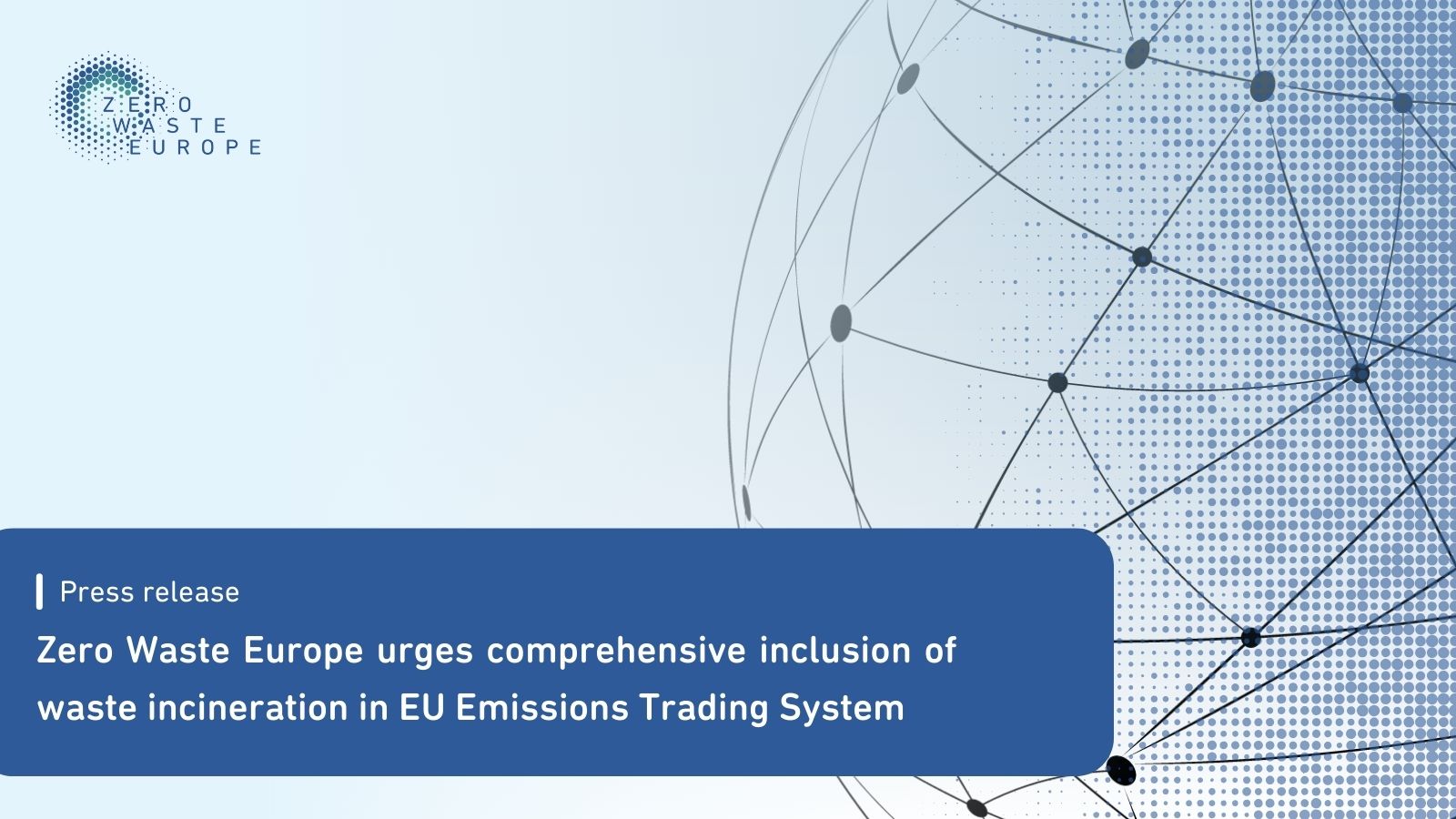Zero Waste Europe urges comprehensive inclusion of waste incineration in EU Emissions Trading System

Brussels, 24 June 2024 – Municipal waste incineration must immediately and comprehensively be included in the EU’s Emission Trading System, says the environmental network Zero Waste Europe in a new report. Comprehensive, meaning electricity and heat incineration, as well as biogenic CO2, to ensure these facilities are included properly.
Developed by Equnimator, the report entitled, “Incineration in the EU-ETS: A set of suggestions for its inclusion” highlights the urgency to adopt this recommendation to achieve the EU’s climate goals.
After the European Parliament approved reforms to the ETS in 2022, a path opened to consider municipal waste incineration under its scope, but as of 1 January 2024, these facilities have only been included for monitoring, reporting, and verification purposes. They are not yet required to surrender allowances for their emissions.
The Commission is required to study the feasibility of including these facilities in the EU-ETS in July 2026, with a potential inclusion by 2028.
Janek Vahk, Zero Pollution Policy Manager at Zero Waste Europe, states:
“The inclusion of incineration within the EU-ETS is long overdue. Incinerators are poised to become the most carbon-intensive power source once coal is phased out. Bringing municipal waste incineration into the EU-ETS will ensure that every sector contributes to emission reductions, driving us towards a cleaner, more circular future.”
The study proposes several key recommendations. Firstly, both power and heat from incineration should be included in the EU ETS without free allowances for heat generation. This approach aligns with the scheduled inclusion of the buildings sector in 2027. Secondly, the European Commission should consider not only landfills but also recycling and waste prevention in their study, meaning the inclusion of municipal waste incinerators within the EU-ETS should not undermine the cascading principle. And thirdly, it should analyse the impact of including waste incinerators and other waste management options based on their performance, and provide recommendations on the economic instruments, such as a tax on incinerators, that may be replaced solely by the EU ETS.
Looking forward, Zero Waste Europe hopes to see a requirement for all CO2 emissions from incinerators, whether fossil or non-fossil, to surrender allowances under the ETS. The current practice of excluding non-fossil CO2 is inconsistent and undermines the goal of reducing greenhouse gas emissions. Lastly, the current 20 megawatt threshold for inclusion is ambiguous and should potentially be lowered to 10 megawatt to prevent small-scale facilities from being excluded and reduce the risk of system manipulation.
“CO2 is CO2,” Vahk adds, “whether fossil or non-fossil; the atmosphere doesn’t care where it comes from, the impact on climate is the same. Therefore, EU ETS needs to address them both.”
ENDS
Notes to the editor
Link to “Incineration in the EU-ETS: a set of suggestions for Its inclusion.”: https://zerowasteeurope.eu/library/incineration-in-the-eu-emission-trading-system-a-set-of-suggestions-for-its-inclusion/
Equnimator’s website: https://www.dominichogg.com/
Press contacts
Sean Flynn, Media Outreach & Communications Officer at Zero Waste Europe, [email protected] or [email protected] / +32 471 96 55 93
About Zero Waste Europe
Zero Waste Europe (ZWE) is the European network of communities, local leaders, experts, and change agents working towards a better use of resources and the elimination of waste in our society. We advocate for sustainable systems; for the redesign of our relationship with resources; and for a global shift towards environmental justice, accelerating a just transition towards zero waste for the benefit of people and the planet. www.zerowasteeurope.eu